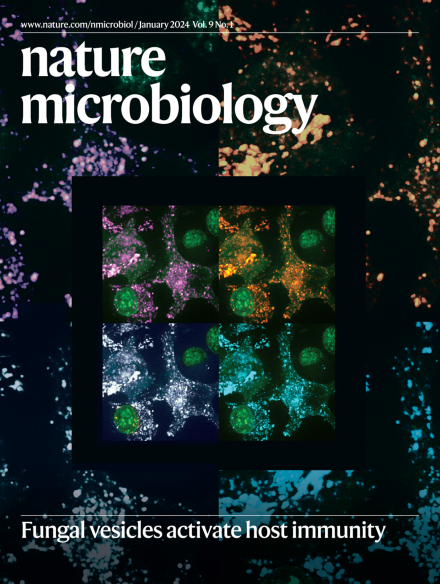Activity-targeted metaproteomics uncovers rare syntrophic bacteria central to anaerobic community metabolism.
IF 19.4
1区 生物学
Q1 MICROBIOLOGY
引用次数: 0
Abstract
Syntrophic microbial consortia can contribute substantially to the activity of anoxic ecosystems but are often too rare to allow the study of their in situ physiologies using traditional molecular methods. Here we combined bioorthogonal non-canonical amino acid tagging (BONCAT), stable isotope probing and metaproteomics to improve the recovery of proteins from active members and track isotope incorporation in an anaerobic digestion community. Click-chemistry-enabled cell sorting and direct protein pull-down coupled to metaproteomics improved recovery of isotopically labelled proteins during anaerobic acetate oxidation. BONCAT-enabled protein profiles revealed elevated activity and labelling of a rare and so-far uncharacterized syntrophic bacterium belonging to the family Natronincolaceae that expressed a previously hypothesized oxidative glycine pathway for syntrophic acetate oxidation. Stable-isotope-probing-informed metabolic modelling predicted that this organism accounted for a majority of acetate flux, suggesting that the oxidative glycine pathway is an important route for anaerobic carbon transformation and is probably central to community metabolism in natural and engineered ecosystems.以活动为目标的宏蛋白质组学揭示了罕见的厌氧群落代谢中心的合成细菌。
共生微生物群落可以对缺氧生态系统的活动做出重大贡献,但往往过于罕见,无法使用传统的分子方法研究它们的原位生理学。本研究将生物正交非规范氨基酸标记(BONCAT)、稳定同位素探测和宏蛋白质组学相结合,提高了厌氧消化群落中活性成员蛋白质的回收率,并跟踪了同位素的结合。点击化学激活的细胞分选和直接蛋白下拉耦合宏蛋白质组学提高了厌氧醋酸氧化过程中同位素标记蛋白的回收率。boncat激活的蛋白质谱显示了一种罕见的、迄今为止尚未表征的隶属于Natronincolaceae家族的合养细菌的活性和标记升高,该细菌表达了先前假设的合养醋酸氧化的氧化甘氨酸途径。基于稳定同位素探测的代谢模型预测,这种生物占了乙酸通量的大部分,这表明氧化甘氨酸途径是厌氧碳转化的重要途径,可能是自然和工程生态系统中群落代谢的核心。
本文章由计算机程序翻译,如有差异,请以英文原文为准。
求助全文
约1分钟内获得全文
求助全文
来源期刊

Nature Microbiology
Immunology and Microbiology-Microbiology
CiteScore
44.40
自引率
1.10%
发文量
226
期刊介绍:
Nature Microbiology aims to cover a comprehensive range of topics related to microorganisms. This includes:
Evolution: The journal is interested in exploring the evolutionary aspects of microorganisms. This may include research on their genetic diversity, adaptation, and speciation over time.
Physiology and cell biology: Nature Microbiology seeks to understand the functions and characteristics of microorganisms at the cellular and physiological levels. This may involve studying their metabolism, growth patterns, and cellular processes.
Interactions: The journal focuses on the interactions microorganisms have with each other, as well as their interactions with hosts or the environment. This encompasses investigations into microbial communities, symbiotic relationships, and microbial responses to different environments.
Societal significance: Nature Microbiology recognizes the societal impact of microorganisms and welcomes studies that explore their practical applications. This may include research on microbial diseases, biotechnology, or environmental remediation.
In summary, Nature Microbiology is interested in research related to the evolution, physiology and cell biology of microorganisms, their interactions, and their societal relevance.
 求助内容:
求助内容: 应助结果提醒方式:
应助结果提醒方式:


